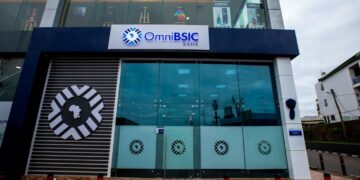Higher shipping costs may lift Asia’s low Inflation
As the world economy recovers from the pandemic, inflation is mounting in advanced and emerging economies.
Pent-up demand fueled by stimulus and pandemic disruptions is helping accelerate inflation, spread around the world through global factors like higher food and energy prices, and soaring shipping costs.
The chart of the week shows how Asia’s inflation has been more moderate versus other regions, affording central banks room to keep interest rates low and support economic recovery.
However, Asia’s tepid price gains may see greater momentum next year. The outlook remains uncertain, and central banks should be ready to tighten policy if inflation pressures and expectations mount.

Several factors explain Asia’s lower inflation. Among Asia’s emerging economies, a delayed recovery has kept core inflation—which strips out volatile food and energy costs—running at half the rate of peers in other regions.
Read This: What’s gone wrong at Chicago’s last Ghanaian owned bank?
And the cost of food—which makes up about one third of the consumer price index baskets—grew 1.6 percent over the past year, versus 9.1 percent in other regions . This reflects unique factors such as a solid harvest in India, a hog population rebound from a recent swine flu epidemic in China, and contained increases in rice prices.
By contrast, lower inflation in Asia’s advanced economies reflects a different set of factors. The region has enjoyed more muted energy inflation than Europe and the United States.
Finally, some Asian countries managed the pandemic in a way that avoided major supply disruptions and the associated pressure on prices.
Korea embraced comprehensive contact tracing and testing, for example, while Australia and China contained infections with border closures and localized lockdowns.
Broad inflationary pressures will eventually moderate globally, as supply-demand mismatches ease and stimulus recedes. But in 2022, as the recovery strengthens, the persistent impact of high shipping costs could put an end to the benign inflation Asia has enjoyed in 2021.
One benchmark measure of global shipping costs, the Baltic Dry Index, tripled this year through October: our analysis shows such large increases in shipping costs boost inflation for 12 months, which could add about 1.5 percentage points to the pace of Asia’s inflation in the second half of 2022.
The region’s policymakers must be ready to act.








